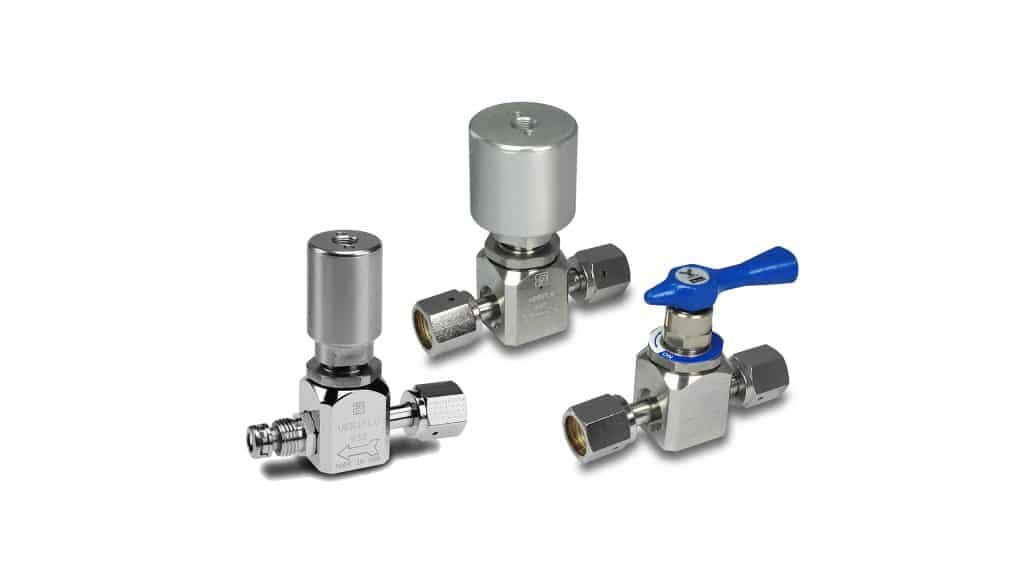RIMAS POLIKAITIS, Capital Projects Manager – Semiconductor — Veriflo division of Parker Hannifin
The semiconductor industry relies heavily on materials that deliver durability, precision and resistance to harsh environments, highlighting the need for innovative engineering in every element of the manufacturing process. This reliance extends beyond the active semiconductor devices to include the very infrastructure that supports production—particularly the fluid conveyance systems that manage both gases and chemicals throughout the fab.
In an era where even the smallest deviation in material purity or performance can compromise yields at nanometer scales, the strategic optimization of materials such as ultra-high purity 316L stainless steel and advanced fluoropolymers like PTFE and PFA is paramount. These components, engineered to withstand corrosive and aggressive conditions, are essential not only for maintaining process integrity but also for ensuring that the facility’s infrastructure meets the rigorous demands of modern semiconductor production.
Stainless steel and critical gas delivery systems
Stainless steel is an essential material in semiconductor manufacturing due to its inherent properties of high corrosion resistance, strength and durability (FIGURE 1). Specific stainless-steel grades, like 304, 316 and 316L, are used in various components such as vacuum chambers, process and inert gas delivery systems, and cleanroom equipment.

316L stainless steel is used in critical inert and process gas delivery systems due to its non-reactive nature. Its resistance to corrosion ensures that it does not introduce contaminants into the manufacturing environment, thereby preserving the integrity of the semiconductor production process.
High-purity electronic special gases, such as hydrogen chloride, hydrogen bromide, hydrogen fluoride, hydrogen iodide, silane, tetrafluoromethane, and ammoniaare used in the semiconductor manufacturing industry for numerous processes, such as wafer etching and vapor phase epitaxy. The transfer of these corrosive and toxic gases requires critical components manufactured from 316L SS and “wetted” surface areas to be finished with the maximum degree of corrosion resistance.
With today’s demands for optimized yield of lower nm nodes in semiconductor devices (smaller transistor sizes on a “chip”), a lesser grade stainless steel does not provide the necessary levels of performance. Hence, a 316L stainless steel compound with an optimized balance of high-performance alloys and residual content is critical for today’s semiconductor production environments.
The manufacture of this 316L SS compound begins with the melting process and material purification of the base material (bar, forging, extruded shapes, plate, and tubing), using metallurgy techniques such as vacuum induction melting (VIM) and vacuum arc remelting (VAR).
As an example, raised levels of nickel, chromium and molybdenum in 316L SS compounds increase the material’s strength and capability to withstand corrosion stemming from contact with aggressive gases such as hydrogen fluoride (HF) and chlorine (CL). In addition, there is a need for specific residual content to remain in this 316L SS compound, such as a specific maximum percentage limit content of sulfur. Sulfur content plays a significant role in ensuring component repeatable weldability, as well as surface finishing.
Low sulfur content is desirable in austenitic stainless steel because it reduces the amount of sulfur available to form manganese sulfide, a non-metallic inclusion responsible for the initiation of corrosion pitting. Corrosion pitting is the dominant corrosion mechanism in austenitic stainless steels, particularly in chloride and related environments.
A specification in the semiconductor industry, SEMI F20, defines materials used in ultra-high-purity (UHP) applications. It focuses on defining the metallurgical cleanliness and material composition of 316L SS required for use in the manufacture of components for ultra-high purity, high purity, and general-purpose fluid (gas or liquid) distribution systems.
In order to keep up with these increasingly stringent demands of the semiconductor industry, critical fluid component manufacturers, such as the Veriflo division of Parker Hannifin, have developed proprietary stainless-steel solutions that meet these required higher standards of purity and performance. Parker Veriflo’s approach is to optimize the properties of 316LSS with a custom-engineered, low-sulfur stainless steel known as VeriClean™ that meets tighter tolerances for melt chemistry and mill practice. The result is improved pitting resistance to chlorides and related gases over conventional UHP grade 316L stainless steel.
